Corruption in the Pacific (a US perspective)
Introduction
The United States State Department’s Country Reports on Human Rights Practices (“country reports”) strive to provide a factual and objective record on the status of human rights worldwide. The 2021 country reports were published on 12 April 2022. These are available for fifteen Pacific countries.
Section 4 of the country reports provides an assessment of “Corruption and Lack of Transparency in Government” which addresses the extent to which a country’s law provides criminal penalties for corruption by officials and the level of implementation of these laws.
Transparency International in their 2021 Corruption Perceptions Index (CPI) report did not include these Pacific countries:
- Kiribati
- Marshall Islands
- Micronesia
- Nauru
- Palau
- Samoa
- Tonga
- Tuvalu
The country reports therefore provide some guidance on corruption in the Pacific countries not included in Transparency International’s 2021 Corruption Perceptions Index (CPI) report
Details of the overview comments for Pacific countries in the 2021 country reports are provided below.
“The law provides criminal penalties for corruption by officials, and the government generally implemented these laws effectively. There were isolated reports of government corruption during the year.”
“The law provides criminal penalties for corruption by officials, but the government did not implement the law effectively. There were numerous reports of government corruption.”
“The law provides criminal penalties for corruption by officials, but the government did not implement the law effectively. There were no reports of government corruption during the year. Officials sometimes engaged in corrupt practices with impunity.”
“The law provides criminal penalties for corruption by officials, and although the government generally implemented the law effectively, officials sometimes engaged in corrupt practices with impunity. Freedom House reported that corruption was a chronic problem, particularly in foreign aid allocation, government procurement, and transfers, and that high-ranking public officials were rarely prosecuted for corruption.”
“The law provides criminal penalties for corruption by officials, and the government generally implemented the law effectively, but some officials reportedly engaged in corrupt practices with impunity. There were numerous anecdotal reports of corruption.”
“The law provides criminal penalties for corruption by officials, and the government generally implemented the law effectively. There were no reports of government corruption.”
“The law provides criminal penalties for corruption by officials, and the government generally implemented the law effectively. The Serious Fraud Office and police investigate corruption. Allegations of corruption can be reported anonymously, and the law protects employees who make a report relating to their employers. Agencies such as the Office of the Controller and Auditor General, and the Office of the Ombudsman independently report on and investigate state-sector activities, acting as watchdogs for public-sector corruption. Only parliament can remove individuals, who are known as officers of parliament, from these positions. Several investigations into alleged irregularities within national and local politics were underway.”
“Government corruption was a problem, and the government took some steps to address it. The law provides criminal penalties for corruption of and by officials. The Office of the Special Prosecutor, an independent entity, is authorized to prosecute all acts of corruption in the government. There were isolated reports of government corruption during the year.”
“The law provides criminal penalties for corruption by officials; however, the government did not always implement the law effectively, and officials often engaged in corrupt practices with impunity. International civil society and human rights groups termed corruption “widespread” and “pervasive.” There were numerous reports of government corruption during the year. Corruption was so serious a problem in part due to weak public institutions and governance, lack of transparency, politicization of the bureaucracy, and the social pressure of traditional clan obligations. Corruption and conflicts of interest were of particular concern in extractive industries, particularly the logging sector, and in government procurement.”
“The law provides criminal penalties for corruption by officials, and the government generally implemented the law effectively. The maximum penalty for corruption is 14 years’ imprisonment. There were isolated reports of government corruption during the year, mostly involving candidates for parliament offering bribes in exchange for votes. Officials infrequently engaged in corrupt practices with impunity. The law provides for an ombudsman to investigate complaints against government agencies, officials, or employees, including allegations of corruption. The ombudsman may require the government to provide information relating to a complaint. The Attorney General’s Office prosecutes criminal corruption cases on behalf of the Public Service Commission. The Ombudsman’s Office and the commission operated effectively. The Ombudsman’s Office included academics and other members of civil society among the members of its commissions of inquiry.”
“While the law provides criminal penalties for corruption by officials, the government implemented the law inconsistently, and officials sometimes engaged in corrupt practices with impunity. There were reports of government corruption during the year.”
“The penal code provides criminal penalties for corruption by officials. The government faced many problems in implementing the law, and the perception that officials frequently engaged in corrupt practices with impunity was widespread. The anticorruption commission (CAC) is charged with leading national anticorruption activities and has the authority to refer cases for prosecution; however, the CAC and the Prosecutor’s Office did not routinely cooperate with each other on investigations. Although the CAC is independent, the government controls its budget, making it vulnerable to political pressure. Institutions with the power and the competence to address corruption avoided investigations of politicians, government members, and leaders and veterans of the country’s independence struggle. The government undertook surprise inspections of government-run programs and increased pressure to implement asset-management and transparency systems.”
“The law provides criminal penalties for corruption by officials, and the government generally implemented the law effectively. There were reports of government corruption during the year.”
“The law provides criminal penalties for some forms of corruption by officials such as theft, and the government generally implemented the law effectively. There were no reports of government corruption during the year.”
“The law provides criminal penalties for corruption by officials, and the government made some efforts to implement the law. Officials sometimes engaged in corrupt practices with impunity, and there were reports of government corruption.
The Office of the Ombudsman and the Auditor General’s Office are key government agencies responsible for combating government corruption.”
Conclusion
The laws in most Pacific countries provide relatively robust criminal penalties for corruption by officials.
The above-mentioned country reports, however, reveal there are currently significant variations in Pacific government efforts to implement legislation covering criminal penalties for corruption.
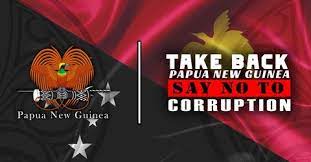
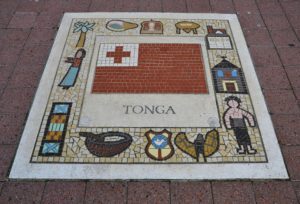 The most recently published IMF Article IV reports for countries beginning with the letters T-V as at 4 January 2024 are listed below. The reports can be accessed by clicking on to the respective countries.
The most recently published IMF Article IV reports for countries beginning with the letters T-V as at 4 January 2024 are listed below. The reports can be accessed by clicking on to the respective countries.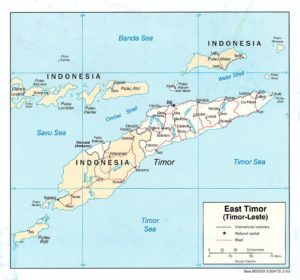
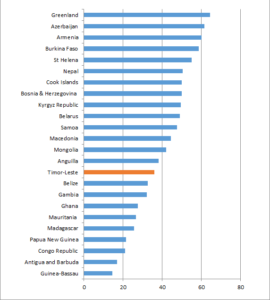
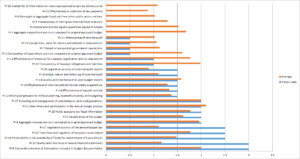 Download a pdf version of Figure 2
Download a pdf version of Figure 2 
